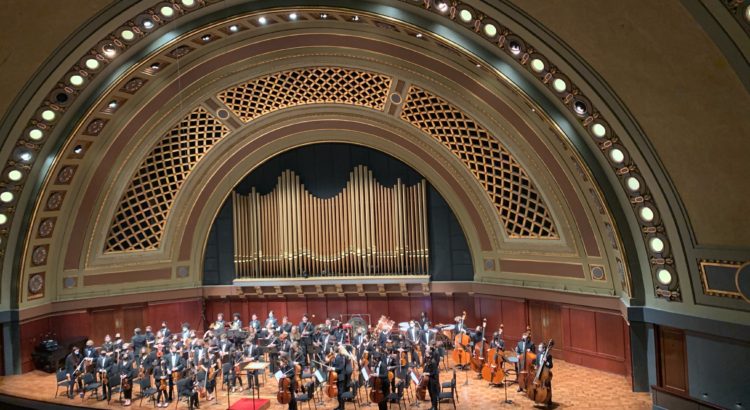The Rude Mechanicals’ student-run production of Choir Boy was truly spectacular.
The play Choir Boy follows a group of Black students at a Christian preparatory school as they explore their identity, religious beliefs, and sexuality. Choir Boy’s touching story amplifies Black voices and talent. Additionally, this play is distinct from other plays as it has a strong musical component; it features church hymns, African-American spirituals, and stepping. This added element made the show dynamic and even more beautiful as the cast was full of incredible vocalists. I was even brought to tears during one of the musical outbreaks.
Moreover, the cast excelled on both the acting and musical fronts. Although wearing virtually identical costumes, the actors portraying the students were able to build a distinct, meaningful personality for their character — for some, even in just a few, short lines. I was deeply invested in watching “the students” grow and change during their time at the preparatory academy. The actors’ ability to subtly and cleverly display “change” in characterization added nuance to the production and reminded me of the ways I grew during high school. Further, some of the actors had to act out extremely difficult, heart-wrenching, and embarrassing circumstances. Yet, I felt as though everything was performed with 110% percent. I admire the courage of the performers who leaned into the material’s difficulty instead of shying away from it.
Above all, this production was able to draw in audience members emotionally. Accordingly, the audiences’ enthusiasm was palpable. I saw the Saturday night show which had an audience that practically filled the Lydia Mendelssohn Theater. Throughout the production, I could hear audible gasps and screams during shocking moments and “awwws” during moving scenes. After each song, the audience gave hearty applause, and the play ended with a standing ovation.
The Rude Mechanicals demonstrated their acting and creative prowess with Choir Boy. I will be attending any and all Rude Mechanicals productions for the rest of my time at Michigan.
(Photo from the Rude Mechanicals’ Instagram Page @umrudes. 11/19/21)



